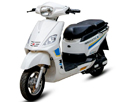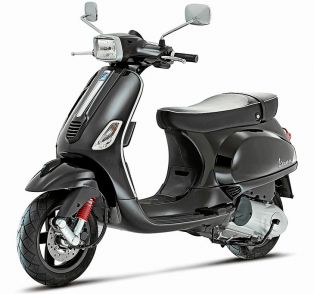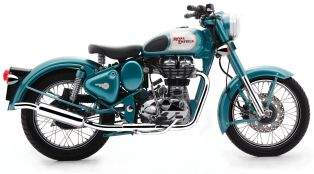Today Ducati are renowned the world over as the authoritative Italian producer of V twin sports machines with a racing family especially in the Word Superbike Championship. In any case, it is the first of these, the 750 Super Sport of 1974, that set the standard for all to take after and genuinely put Ducati on the map.
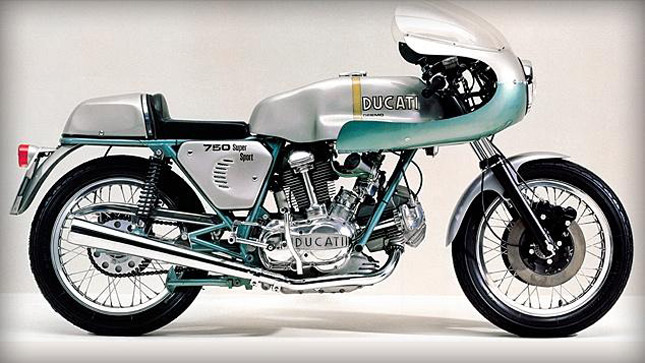
The Ducati 750 Super Sport, although offering spectacular performance, also offered a set of features rarely seen together on a sport bike. The four-stroke engine was able to satisfy the needs of any biker, including those interested in racing, without special customization.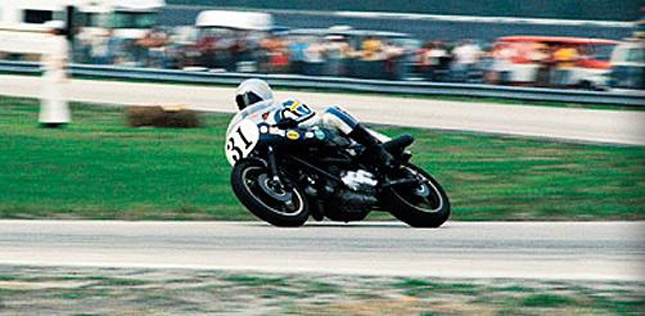
The Bologna firm had been building single cylinder machines with progressive Desmodromic shaft driven camshafts, as created by the legendary designer Fabio Taglioni, for a long time when it chose to move into the big bike market. The first product they made successfully was a 750cc motorbike, including two singles mounted in a longitudinal 90 degree arrangement, it was the GT750 in 1971.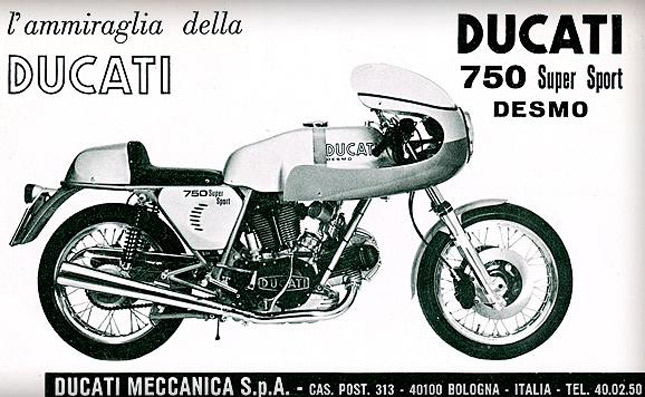
In any case, the complete occasion that changed the fate of the marque came a year later when a racer, got from this production machine and ridden by Briton, Paul Smart, warm the world's best at the prestigious Imola 200.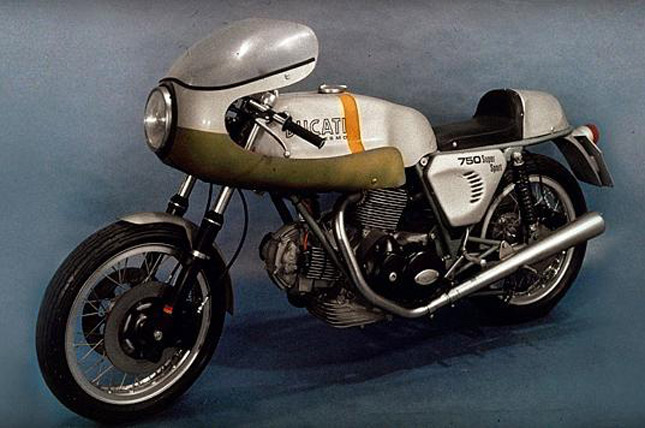
Smart’s bike was based on the 750 Sport roadster introduced that same year. The racer’s cycle parts remained close to stock - even the centre stand lugs were retained! - merely being up-rated with triple Lockheed disc brakes while the engine gained desmodromic cylinder heads, high-compression pistons and stronger con-rods. When the definitive production version - the 750SS - appeared in 1974 it differed little in overall conception from the Imola ’72 bikes, among the most obvious external differences being the adoption of a centre-axle fork and Brembo front brakes.
The big ‘Imola’ fuel tank and humped racing seat both featured on the road bike, which wore a cockpit faring rather than the racer’s fuller streamlining. The 750SS received rave reviews in the motorcycling press, being hailed by Cycle magazine as ‘a bike that stands at the farthest reaches of the sporting world - the definitive factory-built café racer.’ Today the 750SS is regarded as a true landmark model and is one of the most sought-after of all Ducatis.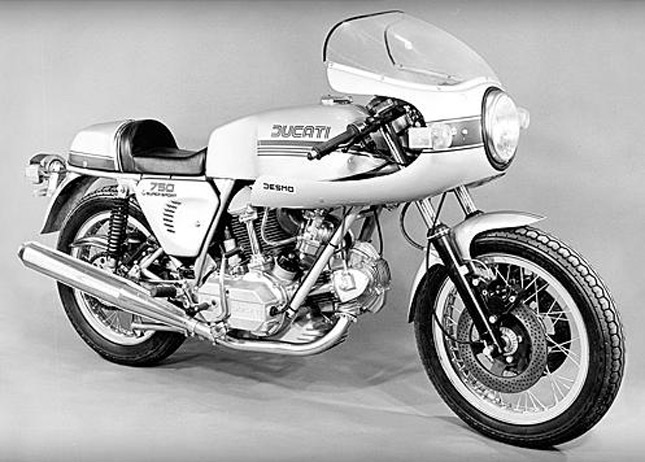
1974 marked the first year of large scale manufacturing of Super Sport. The bike highlighted 10.5:1 compression ratio, a voluminous 22 liter gas tank and a guaranteed weight of 151 kg. A mere 401 1974 Super Sports were created and the bicycle quickly set new standards for production cruisers and had remarkable styling, yet in every practical sense it was an immaculate generation racer with the base of concessions to make it road legitimate.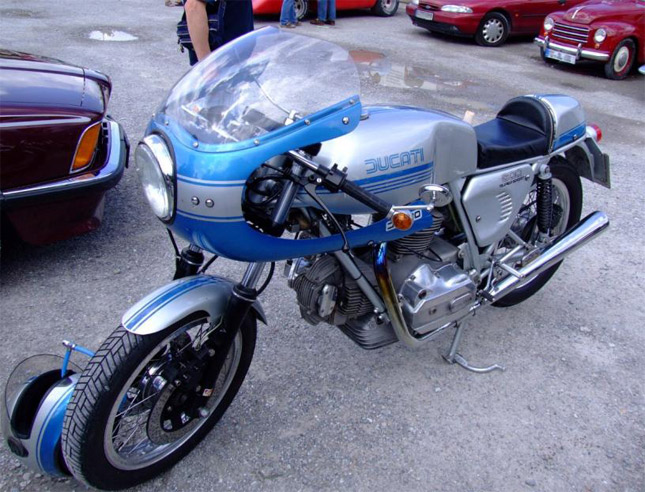 In 1975, two variants of the Super Sport were made accessible in light on the 864 cc "square-case" 90-degree twin cylinder engine; the full 864 cc form instituted the 900 and a sleeved down 750. 250 variants of each were delivered however the 750 and 900 are for all intents and purposes indistinguishable. The 1975 Super Sport kept on utilizing the right-side gear shift in spite of the 1974 U.S. regulation that all bikes have the gear shifting on the left half of the engine. Regardless of this a modest bunch of right side Super Sports have made it into the United States.
In 1975, two variants of the Super Sport were made accessible in light on the 864 cc "square-case" 90-degree twin cylinder engine; the full 864 cc form instituted the 900 and a sleeved down 750. 250 variants of each were delivered however the 750 and 900 are for all intents and purposes indistinguishable. The 1975 Super Sport kept on utilizing the right-side gear shift in spite of the 1974 U.S. regulation that all bikes have the gear shifting on the left half of the engine. Regardless of this a modest bunch of right side Super Sports have made it into the United States.
In production, the GT was followed by the non-faired 750 Sport in 1973 which, in turn, was followed by this, the 750 Super Sport (or SS). This was, in spirit and style, a true replica of the Paul Smart machine. The SS certainly succeeded in its prime objective of delivering superlative all round performance so much so that it can became a favorite with racers but it also offered much more than that. Its charismatic and unique Desmodromic V-twin as both characterful and potent, and the bike was truly versatile and desirable. Ducatis would never be the same again.
By: Rakshit Shastry

For the first time in its history, Ducati offered its advanced Desmodromic system in an L-twin engine.
The Ducati 750 Super Sport, although offering spectacular performance, also offered a set of features rarely seen together on a sport bike. The four-stroke engine was able to satisfy the needs of any biker, including those interested in racing, without special customization.

The 750 SS won the “Daytona 200-Miles” with US rider Cook Neilson
The Bologna firm had been building single cylinder machines with progressive Desmodromic shaft driven camshafts, as created by the legendary designer Fabio Taglioni, for a long time when it chose to move into the big bike market. The first product they made successfully was a 750cc motorbike, including two singles mounted in a longitudinal 90 degree arrangement, it was the GT750 in 1971.

The 750 Supersport Desmo was unveiled at the Milan motorcycle show in November 1973
In any case, the complete occasion that changed the fate of the marque came a year later when a racer, got from this production machine and ridden by Briton, Paul Smart, warm the world's best at the prestigious Imola 200.

The Borgo Panigale factory turned out only 401 units of the first 750 SS.
Smart’s bike was based on the 750 Sport roadster introduced that same year. The racer’s cycle parts remained close to stock - even the centre stand lugs were retained! - merely being up-rated with triple Lockheed disc brakes while the engine gained desmodromic cylinder heads, high-compression pistons and stronger con-rods. When the definitive production version - the 750SS - appeared in 1974 it differed little in overall conception from the Imola ’72 bikes, among the most obvious external differences being the adoption of a centre-axle fork and Brembo front brakes.
The big ‘Imola’ fuel tank and humped racing seat both featured on the road bike, which wore a cockpit faring rather than the racer’s fuller streamlining. The 750SS received rave reviews in the motorcycling press, being hailed by Cycle magazine as ‘a bike that stands at the farthest reaches of the sporting world - the definitive factory-built café racer.’ Today the 750SS is regarded as a true landmark model and is one of the most sought-after of all Ducatis.

As of 1975, the 750 SS used the new “Square Case” engine
1974 marked the first year of large scale manufacturing of Super Sport. The bike highlighted 10.5:1 compression ratio, a voluminous 22 liter gas tank and a guaranteed weight of 151 kg. A mere 401 1974 Super Sports were created and the bicycle quickly set new standards for production cruisers and had remarkable styling, yet in every practical sense it was an immaculate generation racer with the base of concessions to make it road legitimate.
 In 1975, two variants of the Super Sport were made accessible in light on the 864 cc "square-case" 90-degree twin cylinder engine; the full 864 cc form instituted the 900 and a sleeved down 750. 250 variants of each were delivered however the 750 and 900 are for all intents and purposes indistinguishable. The 1975 Super Sport kept on utilizing the right-side gear shift in spite of the 1974 U.S. regulation that all bikes have the gear shifting on the left half of the engine. Regardless of this a modest bunch of right side Super Sports have made it into the United States.
In 1975, two variants of the Super Sport were made accessible in light on the 864 cc "square-case" 90-degree twin cylinder engine; the full 864 cc form instituted the 900 and a sleeved down 750. 250 variants of each were delivered however the 750 and 900 are for all intents and purposes indistinguishable. The 1975 Super Sport kept on utilizing the right-side gear shift in spite of the 1974 U.S. regulation that all bikes have the gear shifting on the left half of the engine. Regardless of this a modest bunch of right side Super Sports have made it into the United States.In production, the GT was followed by the non-faired 750 Sport in 1973 which, in turn, was followed by this, the 750 Super Sport (or SS). This was, in spirit and style, a true replica of the Paul Smart machine. The SS certainly succeeded in its prime objective of delivering superlative all round performance so much so that it can became a favorite with racers but it also offered much more than that. Its charismatic and unique Desmodromic V-twin as both characterful and potent, and the bike was truly versatile and desirable. Ducatis would never be the same again.
By: Rakshit Shastry





